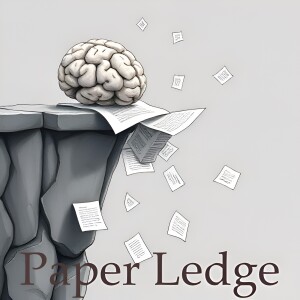
- Podcast Features
-
Monetization
-
Ads Marketplace
Join Ads Marketplace to earn through podcast sponsorships.
-
PodAds
Manage your ads with dynamic ad insertion capability.
-
Apple Podcasts Subscriptions Integration
Monetize with Apple Podcasts Subscriptions via Podbean.
-
Live Streaming
Earn rewards and recurring income from Fan Club membership.
-
Ads Marketplace
- Podbean App
-
Help and Support
-
Help Center
Get the answers and support you need.
-
Podbean Academy
Resources and guides to launch, grow, and monetize podcast.
-
Podbean Blog
Stay updated with the latest podcasting tips and trends.
-
What’s New
Check out our newest and recently released features!
-
Podcasting Smarter
Podcast interviews, best practices, and helpful tips.
-
Help Center
-
Popular Topics
-
How to Start a Podcast
The step-by-step guide to start your own podcast.
-
How to Start a Live Podcast
Create the best live podcast and engage your audience.
-
How to Monetize a Podcast
Tips on making the decision to monetize your podcast.
-
How to Promote Your Podcast
The best ways to get more eyes and ears on your podcast.
-
Podcast Advertising 101
Everything you need to know about podcast advertising.
-
Mobile Podcast Recording Guide
The ultimate guide to recording a podcast on your phone.
-
How to Use Group Recording
Steps to set up and use group recording in the Podbean app.
-
How to Start a Podcast
-
Podcasting
- Podcast Features
-
Monetization
-
Ads Marketplace
Join Ads Marketplace to earn through podcast sponsorships.
-
PodAds
Manage your ads with dynamic ad insertion capability.
-
Apple Podcasts Subscriptions Integration
Monetize with Apple Podcasts Subscriptions via Podbean.
-
Live Streaming
Earn rewards and recurring income from Fan Club membership.
-
Ads Marketplace
- Podbean App
- Advertisers
- Enterprise
- Pricing
-
Resources
-
Help and Support
-
Help Center
Get the answers and support you need.
-
Podbean Academy
Resources and guides to launch, grow, and monetize podcast.
-
Podbean Blog
Stay updated with the latest podcasting tips and trends.
-
What’s New
Check out our newest and recently released features!
-
Podcasting Smarter
Podcast interviews, best practices, and helpful tips.
-
Help Center
-
Popular Topics
-
How to Start a Podcast
The step-by-step guide to start your own podcast.
-
How to Start a Live Podcast
Create the best live podcast and engage your audience.
-
How to Monetize a Podcast
Tips on making the decision to monetize your podcast.
-
How to Promote Your Podcast
The best ways to get more eyes and ears on your podcast.
-
Podcast Advertising 101
Everything you need to know about podcast advertising.
-
Mobile Podcast Recording Guide
The ultimate guide to recording a podcast on your phone.
-
How to Use Group Recording
Steps to set up and use group recording in the Podbean app.
-
How to Start a Podcast
-
Help and Support
- Discover

Computer Vision - Point-Driven Interactive Text and Image Layer Editing Using Diffusion Models
Hey PaperLedge crew, Ernis here, ready to dive into another fascinating paper! Today, we're tackling something super cool: editing text directly into images, even if that text needs to be twisted, turned, or warped to fit perfectly. Think of it like Photoshopping text onto a curved sign, but way smarter!
The paper introduces something called DanceText. Now, the name might sound a bit whimsical, but the tech behind it is seriously impressive. The core problem they're tackling is this: existing AI models can generate images with text, but they often struggle when you want to edit text that's already in an image, especially if you need that text to, say, curve around a bottle or slant along a building.
Imagine trying to change the label on a bottle of soda in a photo. Regular AI might just slap the new label on top, making it look flat and totally out of place. DanceText, on the other hand, tries to make the edit look like it was always there.
So, how does it work? The key is a clever, layered approach. Think of it like this: DanceText first carefully separates the text from the background image. It's like carefully cutting out a sticker from a page. Then, it applies the geometric changes – the rotations, scaling, warping – only to the text layer. This gives you much more control. Think of it like using a stencil where the text is on a separate layer and can be moved around and edited without affecting the background.
But that's not all! Just changing the shape of the text isn't enough. It also needs to blend seamlessly with the background. That's where their depth-aware module comes in. It figures out the 3D structure of the scene to make sure the lighting and perspective of the text match the background perfectly. It's like making sure the sticker appears to be part of the original image itself and cast the right shadows.
"DanceText introduces a layered editing strategy that separates text from the background, allowing geometric transformations to be performed in a modular and controllable manner."The really cool thing is that DanceText is "training-free." This means it doesn't need to be specifically trained on tons of examples of text edits. Instead, it cleverly uses existing, pre-trained AI models to do its job. This makes it much more flexible and easier to use in different situations.
They tested DanceText on a big dataset called AnyWord-3M, and it performed significantly better than other methods, especially when dealing with large and complex text transformations. This means more realistic and believable edits.
So, why does this matter? Well, for artists and designers, this could be a game-changer for creating realistic mockups or editing product labels. For advertisers, it opens up new possibilities for creating eye-catching visuals. Even for everyday users, it could make editing text in photos much easier and more fun.
Think about the possibilities! Imagine quickly updating signage in a photo to reflect new information, or realistically adding custom text to a product image without any clunky Photoshop work.
Here are a couple of things that jumped into my head:
- How easily could this be integrated into existing photo editing software?
- Could this technology be adapted to edit other objects in images, not just text?
Food for thought, learning crew! Until next time!
Credit to Paper authors: Zhenyu Yu, Mohd Yamani Idna Idris, Pei Wang, Yuelong Xia
More Episodes
Create your
podcast in
minutes
- Full-featured podcast site
- Unlimited storage and bandwidth
- Comprehensive podcast stats
- Distribute to Apple Podcasts, Spotify, and more
- Make money with your podcast
It is Free
- Privacy Policy
- Cookie Policy
- Terms of Use
- Consent Preferences
- Copyright © 2015-2025 Podbean.com





